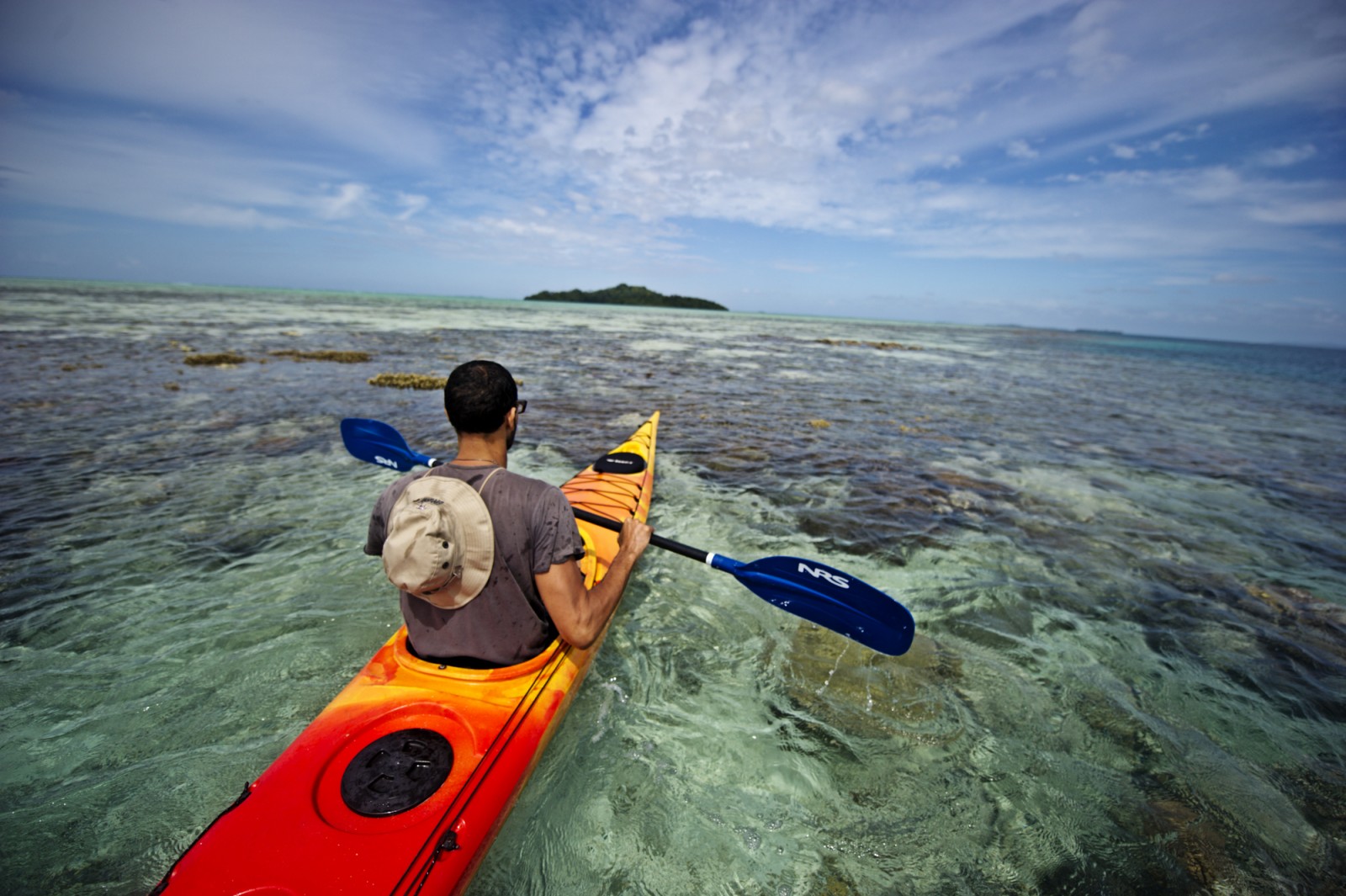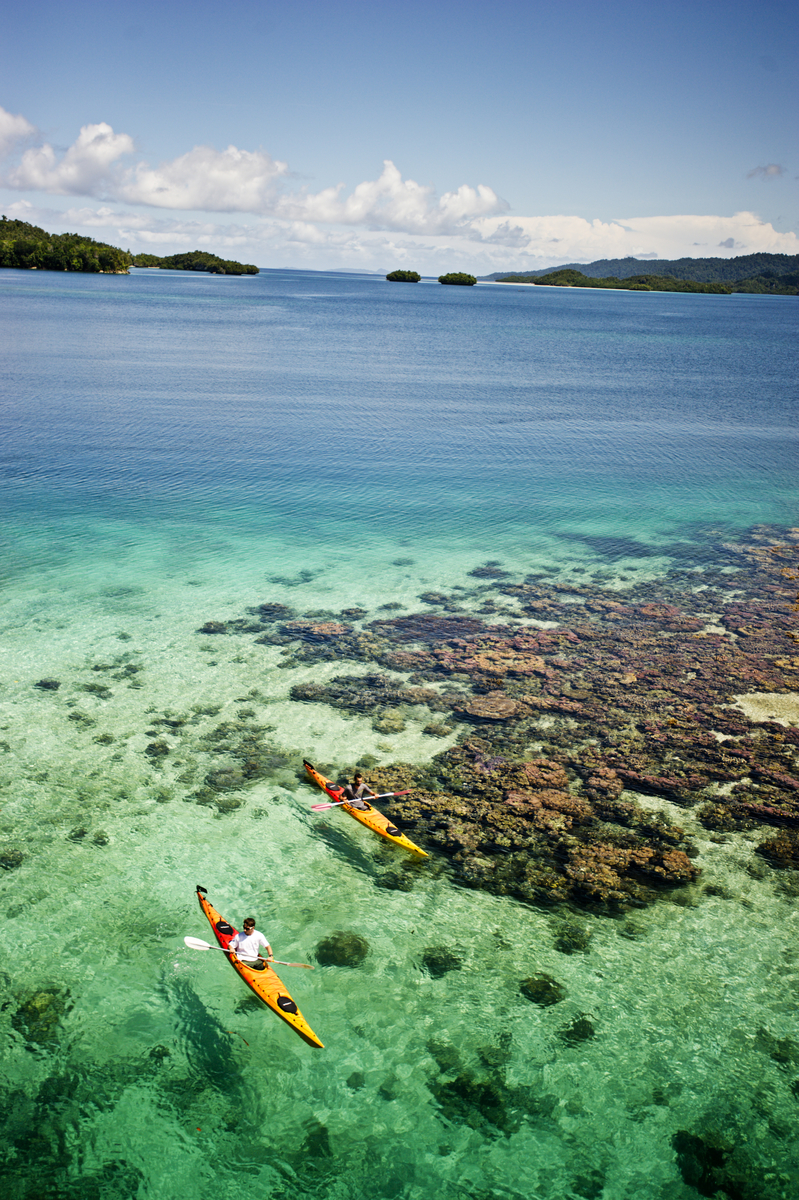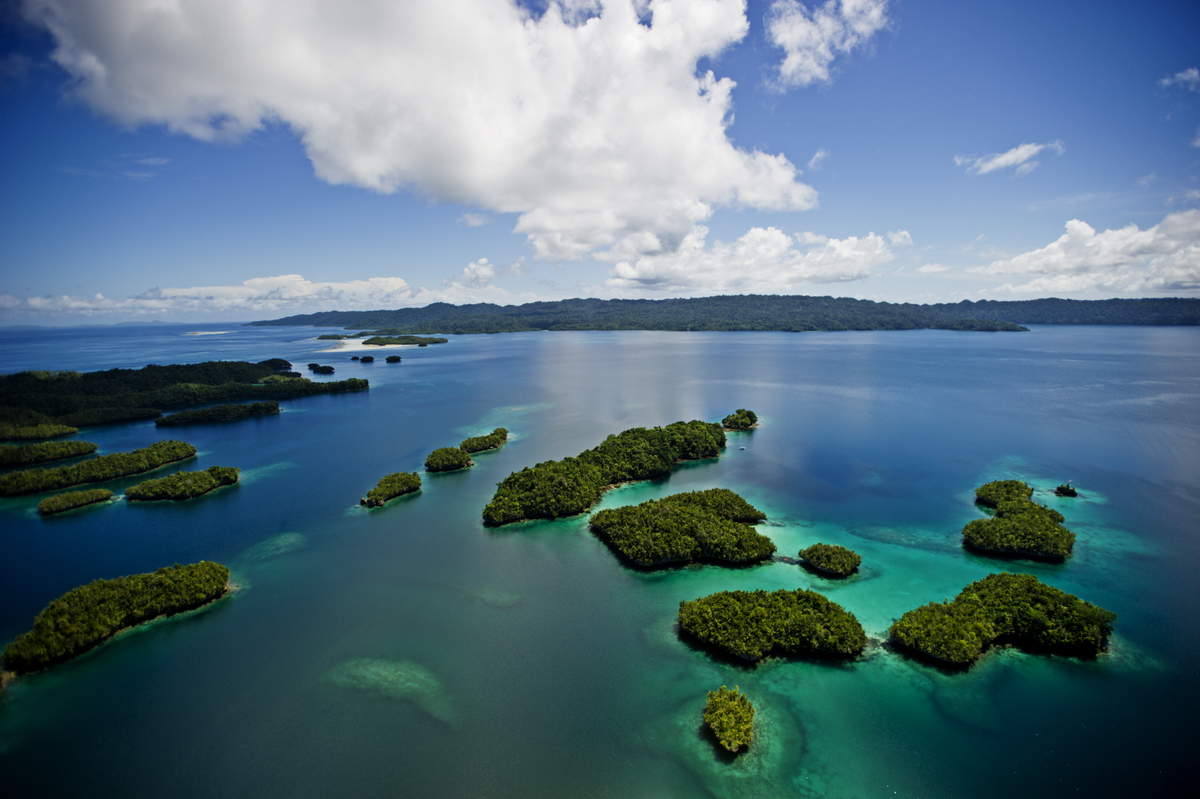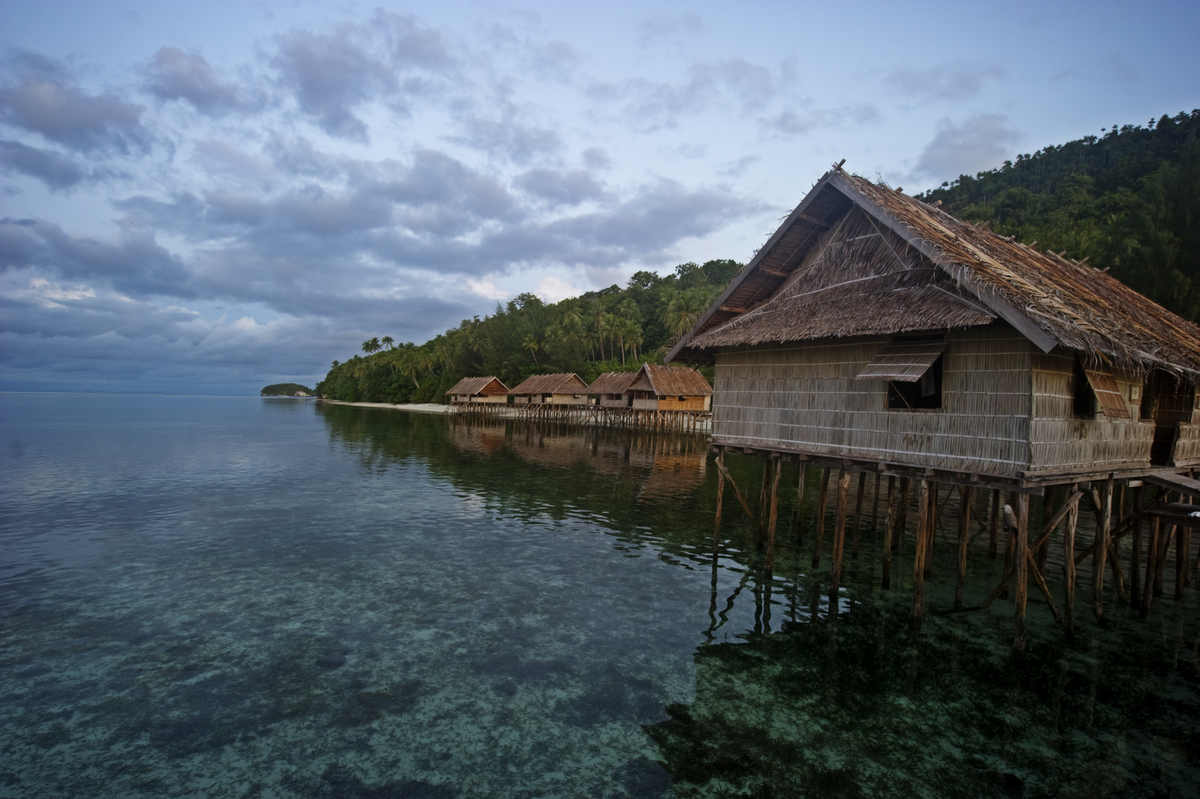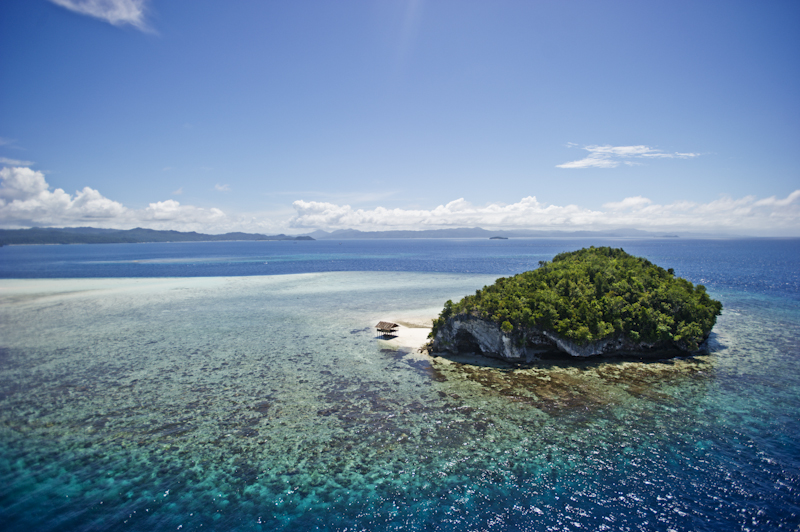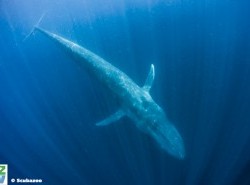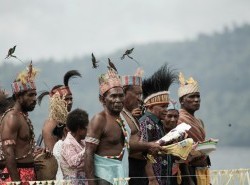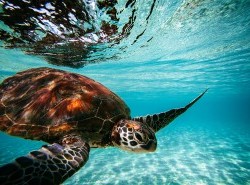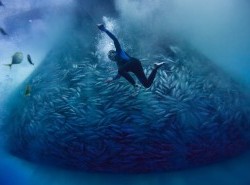The fish aren’t biting. They should be, I think ruefully. After all, there are more marine species here than anywhere else on earth. We’ve been meandering through a narrow maze of mangroves for an hour now, carried on languorous currents that put me in mind of an English river. Except these banks are drenched in jungle thrumming with cicadas and iridescent corals grow beneath the shallow water. I paddle close to the mangrove roots in search of sea snails for bait, when a flash of silver behind my friend’s kayak resolves itself into the shape of a struggling barracuda. Suddenly our supper prospects are looking much brighter. Provided he doesn’t capsize, that is – an equally likely outcome.
Scientists have identified Raja Ampat as the biodiversity bull’s-eye of the world’s oceans – there are single reefs here that contain more species than the entire Caribbean. Everything from blue whales to pygmy sea horses, dugongs to walking sharks can be found in these waters – plus 76% of all known corals. But the region is as dramatic above water as it is below and sea kayaking is an exciting new way to immerse oneself in the richly varied seascape.
As we emerge from the mangroves, we’re joined by a pair of bottlenose dolphins that loop beside us for a while, perhaps amused by our garish orange vessels. We’re at the head of Kaboei Bay, a deep inlet studded with limestone karsts, their bases weathered by the waves so that from a distance they seem to hover above the water. Naturalist-explorer Alfred Russell Wallace sailed through this very bay 150 years earlier, describing it as “one of the most singular and picturesque landscapes I have ever seen.”
Somewhere among these islets is a stilted home stay where we’ll be spending the night and hopefully witnessing what Wallace called “the most extraordinary and the most beautiful of the feathered inhabitants of this earth,” the Bird of Paradise. Well, provided our GPS coordinates are accurate. There’s every reason to be hopeful, since they were punched in by the explorer and conservationist who did his own brand of pioneering here 20-years ago.
Dutchman Max Ammer first came to Papua in search of military hardware, lost or abandoned after the war in the Pacific came to its abrupt end. But his search for wrecks revealed other underwater treasures – Raja Ampat’s vast reef systems. “Back then, this place really wasn’t on the radar,” the ex- Special Forces marine told me as he prepared a survival kit for our kayaking adventure. “I used to tell divers and scientists about what I was seeing, but it wasn’t until 2001 that a proper scientific survey took place.”
That survey logged more than 1000 tropical species, many of them previously undiscovered or endemic. In total, there are more than 3000 fish species here. It’s not like you have to try that hard to find them either. I’d dived Cape Kri the day before, a fringing reef right on the doorstep of Max’s twin resorts, Sorido Bay and Kri Eco Resort. The sheer volume of schooling fish – from barracuda to Napoleon Wrasse to Dogtooth tuna – left me so slack-jawed I almost lost my regulator.
Max is pretty much the go to guy for scientific and photographic expeditions in the area and he works closely with the N.G.O’s that manage Raja Ampat’s network of Marine Protected Areas (MPA’s). He even has a two-seater experimental aircraft provided by Washington based Conservation International, which he uses to patrol Raja Ampat in search of shark-finners and other illegal fishing activities. The sea kayaking he set up to support local villagers. “I give them a loan, help them build the homestays, train them and bring in the tourists, “ he explained. He also provides all the necessary gear – dry bags, fishing tackle, medical kit and that all-important GPS. He’s even starting to build his own kayaks.
It’s a 15-kilometre paddle between each homestay, mostly through lagoons, narrows and bays – though there are challenging open water routes for the hardcore. That doesn’t include us however - we hug the coast for the most part during our three-day trip and are rewarded with a constantly unfolding vista of precipitous jungle, bone white beaches and coral lagoons.
The homestay hoves into view a little before dusk – a wooden jetty and two palm leave huts complete with mosquito nets and mats, built over the water. Lukas Arempele is waiting for us with his three smiling sons who take our barracuda to cook on the open fire. Once a fisherman like most of the inhabitants of Raja Ampat’s 90-odd villages, Lukas now makes a living from tourism, providing guests with rare sightings of the Red Bird of Paradise, which can only be found in Raja Ampat. “My brother and I spent three days looking for them,” he tells me. “People used to hunt them, but we’ve stopped all that now; they’re more valuable alive,” he adds with a smile.
Lukas wakes me at five and we trek by torchlight deep into the forest just as the dawn chorus is beginning, the darkness filled with the resonant song of the butcherbird and the occasional squawks of toucans and hornbills. We arrive at a makeshift hide and he points at a dim shadow in the tree in front of us. “A male,” he whispers, excitedly, though it could be a crow for all I can make out. I decide I’ll wait for as long as is polite then head down for breakfast.
But as the light increases, the bird is joined by another and then another until I can no longer make out the number amidst the flurry of russet wings. A female alights on a branch, her plain feathers a drab counterpoint to the magnificent plumage of the males and suddenly I’m seeing the famous courting dance that Wallace himself had traveled so far to witness. One by one the males vie for her affections, wings spread, fluttering back and forth with the poise of flamenco dancers.
I head dreamily back down to see the sun cresting the tree line and Lukas’ kids fishing off the jetty. We eat the remains of the barracuda, pack up the kayaks and set off. There are 15-kilometres of reef and rainforest to cover before nightfall.
